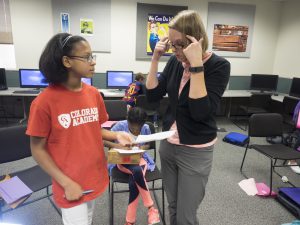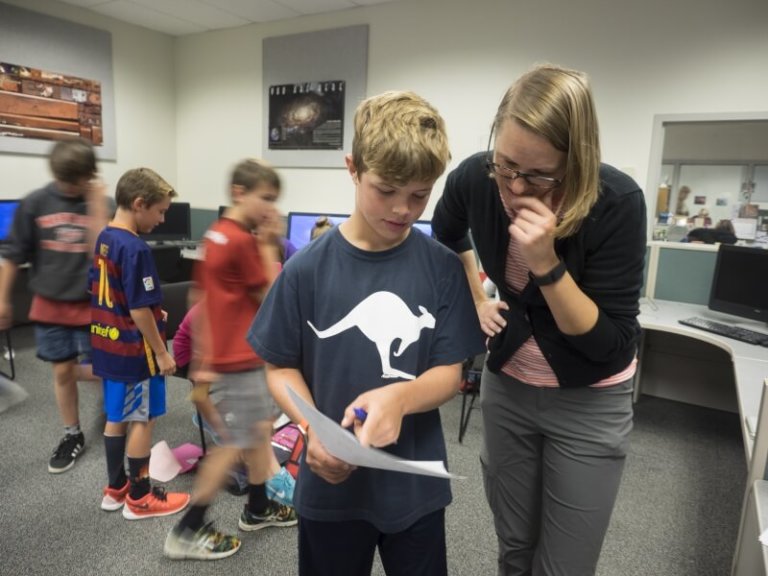Schools are complex, human institutions entrusted with the honor and responsibility of developing our most precious resource, our children. The importance of doing this work right on the macro scale cannot be understated. We need the next generation of stewards to be civic minded, insightful problem solvers, excellent critical thinkers and thoughtful collaborators. How we go about preparing students at Colorado Academy comes down to how we answer the following four questions:
- What content and skills are important enough to teach well?
- How do we make sure each child is challenged and supported in the right measure?
- How do we hire, retain and support exceptional teachers?
- How do we ensure that our program evolves over time to meet student needs?

Content and Skills:
Every school makes choices about what to prioritize, and this decision matters profoundly to the student experience and to the outcomes achieved. There is only so much time in a day, in a week and in a year. In this sense, schools must decide what skills and content are prioritized, as this drives what students will practice and learn. At CA, we are explicit in believing that content instruction is important and lays the foundation for students to develop their critical thinking, creative, communicative and problem-solving skills. Equally important, we prioritize the development of interpersonal skills, leadership and collaboration in particular, as well as character traits such as courage and kindness. Our curriculum provides direct instruction, aligned assessment, and copious feedback to students on their progress in each of these skill areas. Our hope, by the time students reach senior year, is that each has moved from novice to age-appropriate mastery.
Challenge and Support:
Each child arrives at school with a unique learning profile. Each brings strengths and each has areas that present challenge. Getting to know each child as a person and learner is at the heart of what we do, because the better we know, understand and connect to young people, the more able we are to help them become proactive, self-directed learners. With the Board of Trustees’ full support, we maintain class sizes that allow teachers to get to know students as individuals, which allows thoughtful practitioners to create classroom experiences designed to support ALL learners. Equally important, teachers are able to have conversations with students about how their learning is progressing. This sort of formative assessment allows teachers to discover who needs a bit of additional support, or equally important, who needs more challenge. Often we find that the child who may need support in one area of learning is the same child who needs curricular extension in another. This is just as it should be. Identifying what each student needs and providing the measure of support necessary is essential to ensuring positive outcomes for all students.
Faculty, Faculty, Faculty:
Great schools have great teachers; it’s that simple. I have been a middle school principal for twenty-three years, and I can say unequivocally that this particular set of teachers is the strongest group I have had the pleasure of working with. Collectively and individually we are far from perfect, and we know that all aspects of our program need ongoing scrutiny with an eye toward improvement. That said, I also know that I am lucky to be surrounded by these thoughtful educators who take the trust that parents have placed in them incredibly seriously and try each day to bring their very best to their work with our students. There are certainly moments that we fall down, that we make mistakes and that we wish we had played a particular situation a bit differently; yet, my hope is that as a group we consistently try to put your child’s best interest at the forefront of all that we do.
Evaluation and Improvement:
Good schools never stand still. While a school that tries to improve everything at once will inevitably fail, a school that makes wise decisions about where to focus improvement effort will make strides in a consistent, year-over-year manner. If you ever have time, I would be happy to share the arm-length list of curricular and pedagogical areas the Middle School has reviewed and reengineered over the past ten years. The list is long, not because something was “broken,” but because we know that getting better is the result rolling up our sleeves, doing the necessary research and, over time, bringing a critical eye to every aspect of our program. We also understand full well that despite these efforts, there remain myriad ways we can tweak our pedagogy and curriculum that will lead to improved student outcomes. In this sense, while we are proud of the work we are doing with children, we never want to be complacent or stop actively reflecting on ways that we can take another small step forward. I would also like to highlight the invaluable support that our parents give to this process. As a group, you understand and support our efforts to pilot new curriculum and pedagogy because you believe, like we do, that this process is essential to maintaining the quality of our program.
I remain humbled that I get to work at CA with terrific students, families and fellow educators. Should you like to discuss our program or your child’s experience this year, please set up a time for us to chat. How we communicate about what is going well and, equally important, what needs attention helps ensure student growth.
